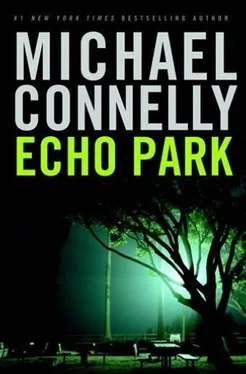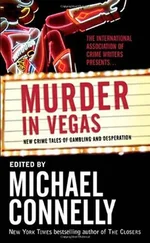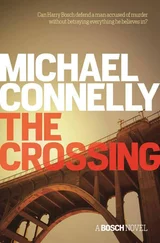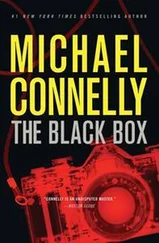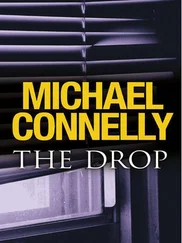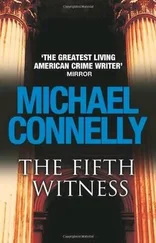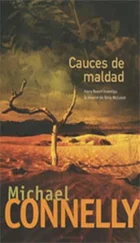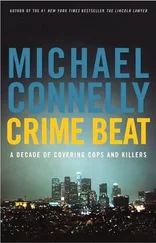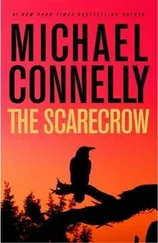F ROM THE STANDPOINT of law enforcement, Raynard Waits was a rarity as a murder suspect. When his van was pulled over in Echo Park, the LAPD in effect had captured a killer the department wasn’t even looking for. In fact, Waits was a killer no department or agency was looking for. There was no file on him in any drawer or computer anywhere. No FBI profile or background briefing existed to refer to. They had a killer and they had to start from scratch with him.
This presented a whole new angle of investigation for Detective Freddy Olivas and his partner, Ted Colbert. The case came to them with a momentum that simply dragged them with it. Everything was about moving forward, toward prosecution. There was little time or inclination to go backwards. Waits was arrested in possession of bags containing the parts of two murdered women. It was a slam dunk, and that precluded the need to know exactly who they had in custody and what had brought him to be in that van on that street at that time.
Consequently, little in the file on the present case helped Bosch. The file contained records of the investigative work related to attempts to identify the victims and drawing the physical evidence together for the impending prosecution.
The background information in the file was simply basic data on Waits either provided by the suspect himself or culled by Olivas and Colbert during routine computer searches. The bottom line was that they knew little about the man they were prosecuting, but what they knew was enough.
Bosch completed his read-through of the file in twenty minutes. When he was finished, once again he had less than a half page of notes on his pad. He had constructed a short timeline that charted the suspect’s arrests, admissions, and use of the names Raynard Waits and Robert Saxon.
4/30/92 -Daniel Fitzpatrick murdered, Hollywood
5/18/92 -Raynard Waits, dob 11/3/71, DL issued, Hollywood
2/01/93 -Robert Saxon, dob 11/3/75-arrested, prowling -IDed as Raynard Waits, dob 11/3/71, through DL thumbprint
9/09/93 -Marie Gesto abducted, Hollywood
5/11/06 -Raynard Waits, dob 11/3/71, arrested 187 Echo Park
Bosch studied the timeline. He found two things worth noting. Waits supposedly didn’t get a driver’s license until he was twenty, and no matter which name he used, he always gave the same month and day of birth. While he once offered 1975 as his year of birth in an attempt to be considered a juvenile, he uniformly gave 1971 at other times. Bosch knew that the latter was a practice often employed by people switching identities. Change the name but keep some of the other details the same to avoid getting confused or forgetting basic information-an obvious giveaway, especially if it’s a cop asking for it.
Bosch knew from the record searches earlier in the week that there was no birth record of Raynard Waits or Robert Saxon with the corresponding 11/03 birth date in Los Angeles County. The conclusion he and Kiz Rider had reached from this was that both names were false. But now Bosch considered that maybe the birth date of 11/03/71 was not false. Maybe Waits, or whoever he was, kept his real date of birth as he changed his name.
Bosch now looked at the close proximity between the date of the Fitzpatrick murder and the date of issue of Waits’s driver’s license. It was less than a month. He added to this the fact that according to the records Waits did not apply for a driver’s license until he was twenty. He thought it was unlikely that a boy growing up in the autotopia of L.A. would wait until he was twenty to get his driver’s license. It was yet one more indication that Raynard Waits was not his name.
Bosch started to feel it. Like a surfer waiting for the right swell before starting to paddle, he felt his wave coming in. He thought that what he was looking at was the birth of a new identity. Eighteen days after he murdered Daniel Fitzpatrick under cover of the riots, the man who killed him walked into a DMV office in Hollywood and applied for a driver’s license. He gave November 3, 1971, as a date of birth and the name Raynard Waits. He would have had to provide a birth certificate, but that would not have been too hard to come up with if he knew the right people. Not in Hollywood. Not in L.A. Getting a phony birth certificate would have been an easy, almost risk-free task.
Bosch believed that the Fitzpatrick murder and the change of ID were connected. It was a cause-and-effect. Something about the murder caused the killer to change his identity. This belied the confession given two days earlier by Raynard Waits. He had characterized the murder of Daniel Fitzpatrick as a thrill kill, an opportunity to indulge a long-held fantasy. He went out of his way to depict Fitzpatrick as a victim chosen at random, chosen simply because he was there.
But if that was truly the case and if the killer had no previous connection to the victim, then why did the killer act almost immediately to reinvent himself with a new identity? Within eighteen days the killer procured a false birth certificate and got a new driver’s license. Raynard Waits was born.
Bosch knew there was a contradiction in what he was considering. If the killing of Fitzpatrick had taken place as Waits had confessed, then there would have been no reason for him to quickly create a new identity. But the facts-the timeline of the murder and the issuance of the driver’s license-contradicted this. The conclusion to Bosch was obvious. There was a connection. Fitzpatrick was not a random victim. He could, in fact, be linked in some way to his killer. And that was why his killer changed his name.
Bosch got up and took his empty bottle to the kitchen. He decided that two beers was enough. He needed to stay sharp and up on the wave. He went back out to the stereo and put in the masterpiece. Kind of Blue. It never failed to give him the charge. “All Blues” was the first song out of the shuffle, and it was like being dealt blackjack at a twenty-five-dollar table. It was his favorite and he let it ride.
Back at the table he opened the Fitzpatrick murder book and started to read. Kiz Rider had handled it earlier but she had simply been engaged in a review to prepare for taking Waits’s confession. She wasn’t looking for the hidden connection Bosch was now seeking.
The investigation of Fitzpatrick’s death had been carried out by two detectives temporarily assigned to the Riot Crimes Task Force. Their work was cursory at best. Few leads were followed, because there weren’t many to follow in the first place and because of the overriding pall of futility that fell over all the cases associated with the riots. Almost all acts of violence associated with the three days of widespread unrest were random. People robbed, raped and murdered indiscriminately and at will-simply because they could.
No witnesses to the attack on Fitzpatrick were located. No forensic evidence was found other than the can of lighter fluid-and it had been wiped clean. Most of the shop’s records had been destroyed by fire or water. What was left was put in two cartons and ignored. The case was treated as a dead end from the moment it was born. It was orphaned and archived.
The murder book was so thin that Bosch finished his front-to-back read-through in less than twenty minutes. He had taken no notes, gotten no ideas, seen no connections. He felt the tide ebbing. His ride on the wave was coming to an end.
He thought about getting another beer out of the box and attacking the case all over again the next day. Then the front door opened and Rachel Walling walked in, carrying takeout cartons from Chinese Friends. Bosch stacked the reports on the dining room table so there would be room to eat. Rachel brought plates from the kitchen and opened the cartons. Bosch got the last two Anchors out of the refrigerator.
Читать дальше
